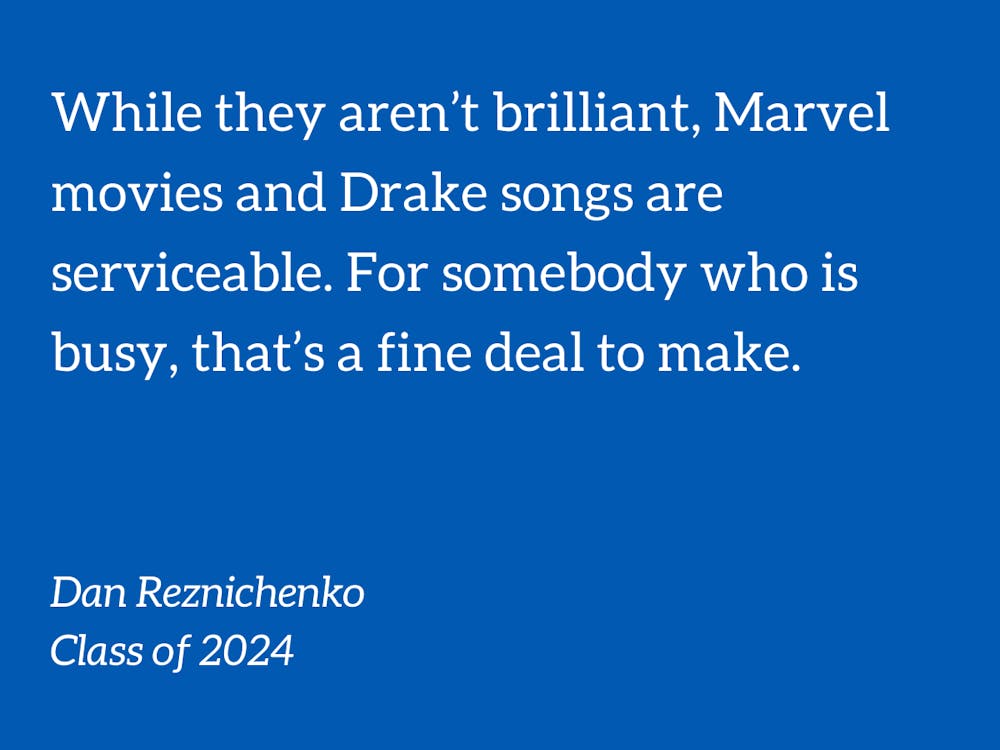YouTube comment sections are a bleak wasteland of unhinged takes, stale jokes and sad grabs for attention. I am addicted to the anguish of browsing them. Lucky me, I’m also fond of 90’s hip hop, a genre where the YouTube comments are especially cursed. One is now seared into my brain:
‘Welcome to the gangster’s lounge. You can leave your guns at the door here—you’re among friends.’
This comment, although it feels uniquely delusional, is just an extreme expression of the ‘born in the wrong generation’ cliche. You have the false sense of belonging to a lifestyle you’ve never experienced plus the belief that you are surrounded by people who misunderstand you. ‘Finally, the lonely hustler can let his guard down.’
Most people agree that this sentiment is laughably dumb, yet we somehow let its close relative slide. Namely, we give credence to the idea that “media is getting dumber because audiences are getting dumber.” Anyone who holds this position also orients themselves as a True Art Appreciator, surrounded by a horde of morons.
Why don’t we make fun of this take, too? Probably because there is some truth to it. A lot of art tends to be uninspired. Specifically, art produced by massive conglomerates—the most prevalent kind—seems to be getting lazier. Disney’s catalogue is, on the aggregate, intensely forgettable. Most of the Billboard Hot 100 is sanitised, focus tested and unimaginative. Still, audiences seem fine consuming soulless media.
At the same time, there is evidence that people want change. Tell the most pedestrian consumer that movies are getting dumbed down and they’ll probably agree. Maybe that’s because hating popular things is an easy way to feel superior. However, seeing the way that people react to fresh content, it’s hard to believe that ego is the only factor at play. A talented film like Parasite, or Get Out, becomes an instant classic. Artists from Soundcloud, each with unique styles, blow up every year. People crave originality, and the proof lies in our celebration of trendsetters.
We should also consider the fact that countless uninspired movies, books, and albums existed in the past. Every year’s box office records and album charts are full of now forgotten, mediocre works. This is to say that audiences’ tolerance of ‘bad’ media is far from a new thing. Perhaps the people calling audiences dumb ignore these realities because their theory flatters them. Also, calling yourself smart is easy. Thinking? Not so much.
Still, it’s interesting to wonder why audiences accept mediocrity. It’s not because they’re stupid, and they aren’t afraid of challenging media, either. I think, simply, that they know how to be smart with their time. Finding something ‘good’ is a long, painful process. Wading through Soundcloud, Netflix, or a reading list takes time and energy. For every gem you find, you’ll encounter a mountain of content that sucks. Unless you are bored out of your mind, or have an abiding passion for an art-form, you’re better off with a safe bet. While they aren’t brilliant, Marvel movies and Drake songs are serviceable. For somebody who is busy, that’s a fine deal to make.
Publishers of art are in a similar boat. They know that ‘brilliant’ media is lucrative: a new, valuable IP, with all the opportunities for monetization that accompany it. So why not innovate? Well, it is very hard and very risky to make something inspired. Trusting a director, a writing team and a crew to produce a visionary film is a gamble which, more often than not, will not pay off. Similarly, allowing an artist to experiment with their sound is a hit or miss proposition, and the consequences of a miss are quite severe. It makes far more sense, from a business perspective, to put together a product which is fine, market it heavily, and cash in. That takes little talent, does not demand vision, and carries little risk. In other words, it’s the smart way to do business.
As a company gets bigger, this only makes more sense. When a single film costs hundreds of millions of dollars, and you’re beholden to hungry investors, you cannot afford to flop. When there’s competition, it makes more sense to try and innovate—you need an edge, you need that IP. However, in a captive market (like the one Disney has), that pressure to innovate is gone. Who are you going to lose your market share to? Thus, it becomes harder and harder to justify gambling on innovation.
In other words, the profit motive is suppressing creativity. At the very least, that is the case right now. Yet, somehow, I doubt that we’ll see the trust-busting of Disney, the Warner Music Group, or Sony. Even if it happened, the pressure to play it safe would still exist. Is art doomed to be formulaic?
Perhaps an alternative would be more grants for art—some funding mechanism detached from the profit-motive. The Babadook, a wonderfully creative film, was funded by the Australian government, so this has worked before. George Lucas, controversially, claimed that Soviet filmmakers had more artistic freedom because profit obviously wasn’t a concern. And although there are many things to be said about the USSR, it did produce some impressive cinema. Directors like Tarkovsky have had a lasting influence on the film industry; if you’ve seen The Revenant, you’ve seen homages to Tarkovsky.
Hence, we should start talking about more grants for the arts. Audiences are not stupid, and I doubt that there’s a deficit of creative, visionary artists waiting for an opportunity. To pretend that people are too stupid, in our modern day, to generate or appreciate something beautiful, is the height of arrogance. Perhaps our culture is atrophying, but there’s a clear path to help it.
Dan Reznichenko is a Trinity Sophomore. His column runs on alternate Wednesdays.
Get The Chronicle straight to your inbox
Signup for our weekly newsletter. Cancel at any time.
Dan Reznichenko is a Trinity junior and an opinion managing editor of The Chronicle's 118th volume.

